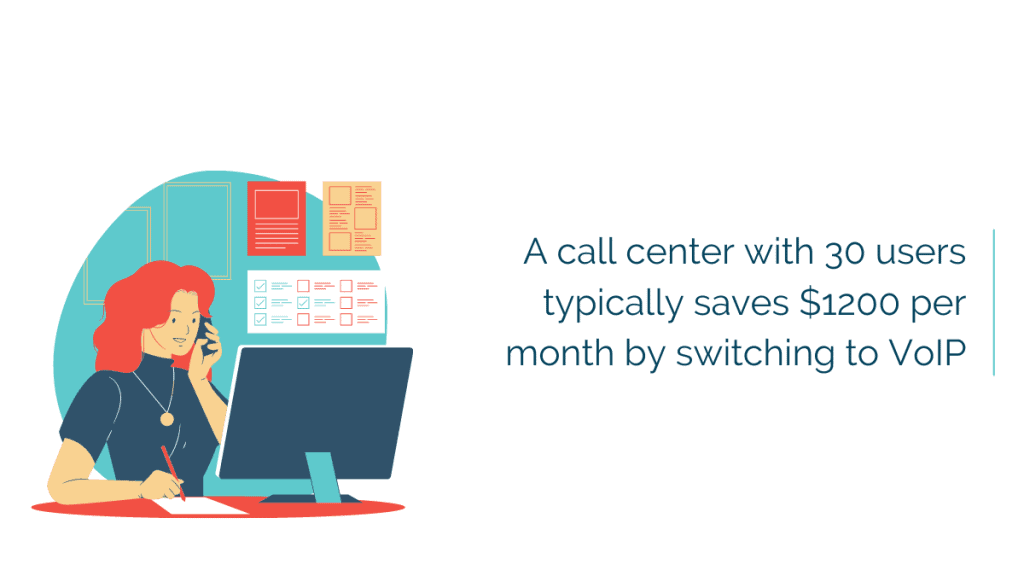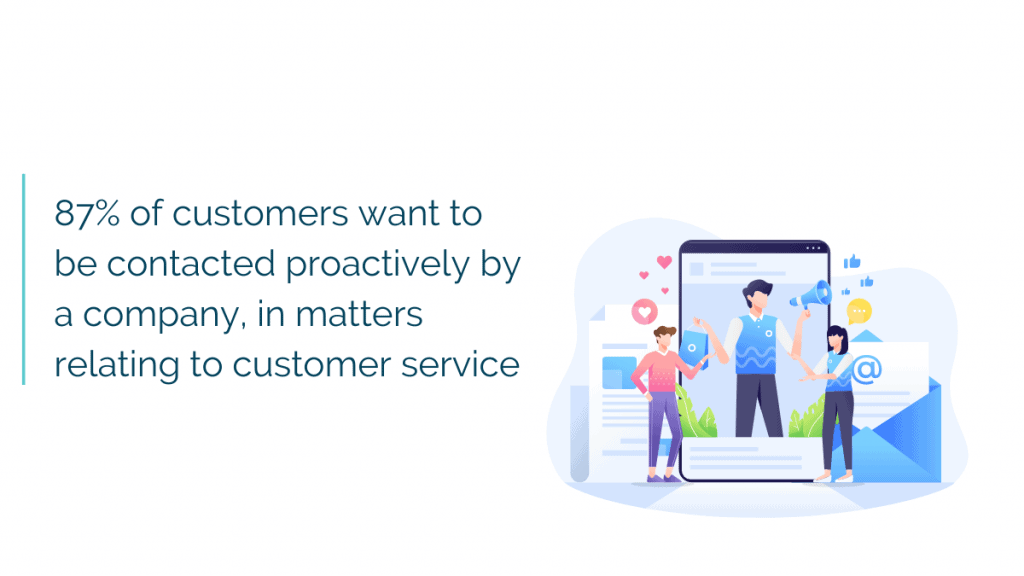In this post:
- The rise of outbound call center services
- What made outbound services available to every business?
- Do customers really expect outbound call center services?
- 6 Kinds of outbound service you could offer today
More and more companies are using outbound calling to provide better support to customers.
These businesses are either building on their existing inbound capabilities or starting with a blended model.
If you’re considering offering outbound calling, you’re en route to unlocking a powerful mode of service.
So let’s discuss why outbound call center services are so effective (and highlight how you can use them to delight customers).
The rise of outbound call center services
The increase in outbound call center services is being driven by:
- lower costs
- increasing customer demand
New tech has made outbound available to *everyone*
“Can we afford outbound service?” That used to be a good question.
But not so much these days.
Cheap access to VoIP telephony and CTI means that running an outbound contact center is a realistic option for basically every business.
It’s possible to get started with little more than an app and a headset.
And, once you’re up-and-running, calls made via these channels are *far* cheaper than through a standard phone line.


Omnichannel service means customers *expect* outbound calling
Customers expect businesses to offer omnichannel services.
To do that successfully means you have to be available on all the channels your customers use and you need to switch between them seamlessly.
A modern service or sales conversation could easily involve jumping from a text-based chat to a voice call. But that’s impossible if your agents can’t make outbound calls.
There are many types of outbound call center services
Do you associate outbound calling with cold sales calls?
A lot of people do. But in reality those practices are in decline.
Meanwhile, many other kinds of outbound calling provide significant customer value.
Here are six that you could start offering today…
#1 Welcoming new customers
Calling new customers is an integral part of onboarding.
Contact customers soon after they come on board; ask about their experience and check whether they need any extra support.
This gives you a chance to answer any questions they have and check that they’re receiving full value.
(This is where you’ll find and prevent issues that may cause churn later on. See – who needs thousands of cold sales calls when simply contacting new customers provides so much more value!)
#2 Offering proactive customer service
Proactive customer service is when you contact customers about issues *before* they call you.
Clearly, this is a major boost for customer experience.
“But,” I hear you saying, “the cost of organizing all those calls is going to be huge!”
Well… not if you’re automating outbound contact.
A deeply integrated CRM can effectively compile call lists for you and trigger your dialer to place those calls. Admin costs – gone!
Besides, not all of that outbound contact needs to be calls anyway.
If you have an issue that affects a large percentage of your customer base, send an SMS with a link to more information.
Bottom line – proactive service reduces incoming call volume. That directly reduces costs and has an enormous impact on how customers feel about your business.

#3 Providing a ‘virtual queue’ option
A fellow call center agent once asked me, “Why do so many people call when we’re busy?!”
I still chuckle about that sometimes…
Still, it would be great if there was an easy way to smooth those peaks, right?
Enter virtual queuing.
In short, virtual queuing allows customers to hang up instead of waiting on hold, knowing that you will call them.
It’s useful because people truly hate waiting on hold.
There are few ways to set this up, based on factors like incoming call volume, agent availability, or scheduled time slots.
Whichever of these works for your business, virtual queuing is useful because it makes your contact center more flexible to what customers really want.
#4 Gathering customer feedback
You should also consider using outbound calls for surveys and feedback.
This is a phenomenally good way to fill downtime. If your agents on the floor (and few calls coming in) you need to find another way to keep them occupied.
Surveys are a strong option because:
- Customers don’t find them too invasive (like, say, hardball sales calls!)
- You can drop them immediately if incoming calls pick up again
- Your agents don’t need a lot of new training to complete surveys.
It’s a pretty clear win-win, and customer feedback is super valuable.
#5 Improving retention
Outbound calling can help with customer retention. A well-timed call can be the difference between a customer kept, and a customer lost.
One highly simple method to reduce churn is to call customers who are entering the last month of their contract but haven’t yet signed up for the next period.
Likewise, you can track other ‘red flags’ for churn (like negative feedback or a drop in product usage) and reach out to customers with a well-timed intervention.
#6 Ensuring support is available to all
Outbound calling may be essential if you have customers that can’t use other channels.
In our digital-first world, it’s only too easy to expect customers to prefer web chat or automated services.
But you still need to support that part of your customer base which can’t easily access the internet.
Outbound phone support won’t solve all accessibility issues. But the more channels you have available, the more likely it is that people will find one that suits them.
Outbound support has many benefits
Maybe you won’t offer all of the categories of outbound call center service we’ve listed here.
But by offering one or two of them, you’re taking a significant step that will make your business stand out.
In brief, here’s why outbound calling is so great:
- In a world of chatbots and knowledge bases, talking on the phone provides a human touch. You’ll separate yourself from less people-first brands.
- You’ll reduce stress on inbound teams as they’ll have fewer calls to deal with.
- New technologies mean it’s easier than ever before to bring these services in-house. You’ll get full control over quality and the services you offer.
- It’s an affordable way to grow revenue via telesales, retention calls, and upselling.
- It’s a great way to find out more about the customer experience via surveys and research.
To make the most of outbound calling, integrate your dialer and contact center software with your other tools.
When your entire system works together, you are perfectly placed to take full advantage of the outbound call center services in this article.





